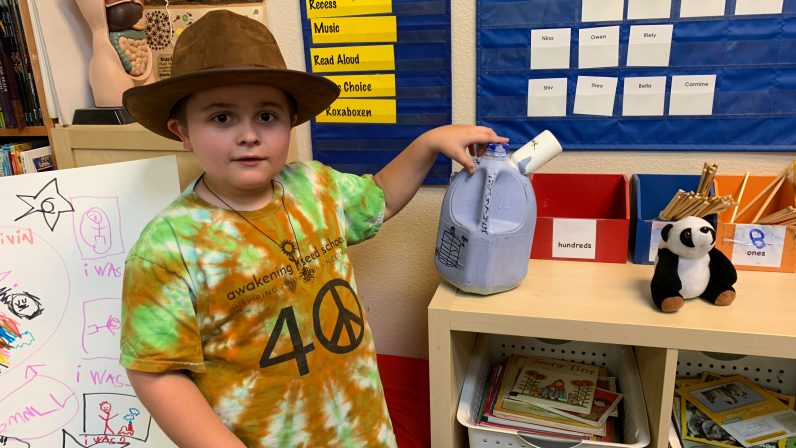As an alum of Arizona State University, I often receive ASU publications. One arrived last week that caught my eye. On the cover was a delightful photo of Alberto Ríos, an ASU professor, Arizona’s first poet laureate from 2013-15, and a former Seed parent. I read the engaging article about Alberto, his life, and his work as a writer. The article opens with a story about an exploding watermelon truck, a memory from his youth. Among the remains of the burned out truck, he found a piece of molten metal that had solidified. He took it home, wrapped it up, then lost track of if for several years. How he found the piece of metal again and its significance is described this way in the article:
“After my parents passed away, we were clearing the house. I opened a drawer, and I found it. I unwrapped it and I realized, this is why I need to be a writer … why we all need to be writers. I thought, absolutely nobody would know what this is. I was the carrier of its story and it had waited all this time for me to tell it.
“I talk to kids a lot about that,” Ríos says. “The story happened a long time ago, but it’s still fresh to me because I hold this talisman in my hand. We all have some version of that, even if it’s just our version, and it’s for us to tell.”
Further into the article, Alberto mentions a term I hadn’t heard of before, “marvelous real.” While I’m still in the process of wrapping my mind around its meaning, it seems like what he’s saying is that there’s a whole world that exists and is visible to us if we adjust our eyes to seeing it. It might seem magical AND it’s also ordinary life. I often invite kids to view the world through the eyes of a poet, to find the big ideas in small occurrences or objects, then write about it.
I talked with our 3rd and 4th graders about Alberto Ríos and his thoughts about being a writer. Our discussion that followed was a perfect example of the marvelous real; which started me thinking about the Seed’s wealth of other examples. Just this week I recalled a first grader confidently sharing his intricate birthday poster along with the repurposed milk jug he turned into a house for his stuffed animal. The second grader who pursued me all day to share the lines he wrote about his grandmother, after a discussion of beautiful words, also came to mind.
Next week we are hosting an evening of sharing information about our K-4 program. In addition to listing advantages of remaining at the Seed into the elementary years, we will talk about our approach to academics, homework, and have teachers present to answer questions. Through all of this, it is my hope that the Seed’s “marvelous real” will also be evident. I, for one, will continue to write about aspects of a Seed education that, though hard to measure, stay with students through the remainder of their lives, shaping the compassionate, confident planetary stewards they become. Additionally, I am committed to my ongoing work with our elementary student writers to help them find and use their voices, both during their time at the school and beyond.

